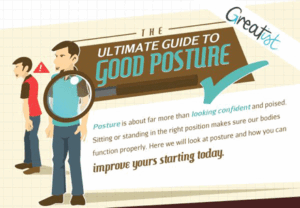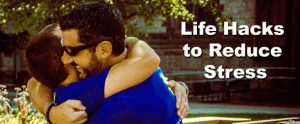How do you “Feel”?
One of the most frequent topics discussed at The Boston Bodyworker is “tightness”. Patient ask us all the time; “Does my (hip, neck, shoulder) ‘feel’ tight?” What YOU “feel” relates to an actual sensory (S) experience. What WE “feel” is more of a palpable (P) experience. Both patient and practitioner throw around the word “feel”, yet many times we are “feeling” in two VERY different ways. Given that each of us are individually constructed and possess our own unique neurosignature when it comes to what we ‘feel’ (S), your therapist can help you to determine what a normal end range should be and what you may experience as a feeling (P) when you hit it. Having healthy articular (joint) function will alleviate a wide range of issues we commonly see. There are a couple of key terms we use when exploring end ranges in joints. The term we commonly use is ‘end-feel’. An ‘end-feel’ can be either soft or hard. It is not always easy to differentiate between the two without a lot of experience of ‘feeling’ (P) for both of them. Ultimately, a ‘soft’ end-feel will be when the connective tissue is stretched to a point where it feels (P) like the last bit of elasticity being pulled on a bungee cord. A hard or ‘bony’ end-feel is when we feel (P) the connective tissue stretching evenly and then a sudden ‘hard’ stop occurs. This does not necessarily mean that a patient will be ‘feeling’ (S) the same thing. Typically, a patient determines what they ‘feel’ (S) based upon a sensory experience. Often, the two ‘feelings’ are not synchronous. Our body will usually send up warning signals prior to us being capable of achieving what our real end-range could be. Understanding what you feel (S) in these situations can greatly enhance the means in which you re-train individual movements.
Before starting to explore the difference between a soft and hard end-feel. Take some time to wake up your nervous system through some dynamic movements. This will fire up your synapses, excite your muscle spindles and prepare you to hone in on exactly what you are focusing on. Once you are properly warmed up and have explored your current ranges, you can start to ease into finding where you may need improvements. It’s important to keep in mind that you should not compare your range of motion (ROM) to someone else. Although we are similar in many ways, we are all very different in what can be achieved. You are trying to improve your joint mobility for your own body, not your partners or something you saw on YouTube. The last and most important tip I can offer when exploring your articular mobility is B-R-E-A-T-H-E. The best way to find your range is to breathe evenly and deeply as you challenge your ROM. Oxygenating the system is a great way to communicate with the brain that all is safe. Holding your breath signals the brain and your nervous system to override the objective and create a neurological barrier aimed at preventing an injury that may not be at risk.
Here are a few hip stretches that you can begin to play with as you learn how to listen to what you are feeling when trying to improve ROM in a joint.

Ready to #feelbetter?
You're just a click away from a wicked good massage!
-

60 Minute Massage Gift Card
$170.00 Add to cart -

90 Minute Massage Gift Card
$255.00 Add to cart -

Mini Aer Small Room Air Purifier
$149.00 Add to cart -
Sale!

Thera-Pearl Sports Pack/Hot Cold
Original price was: $14.99.$12.99Current price is: $12.99. Add to cart -

3 Somadome Sessions Gift Card
$135.00 Add to cart -

20 Minute Somadome Gift Card
$45.00 Add to cart -
Sale!

TheraBand® Stretch Strap
Original price was: $19.99.$14.99Current price is: $14.99. Add to cart -

TheraBand CLX Connective Loop
$14.99 Select options
Passion Mountain
I was at an event recently and was asked by somebody how I could STILL be so passionate for what I do. He said, “What I mean is that you talk about what you do with the passion of child flipping through a new pack of baseball cards. I wish I was that passionate about…
Read MoreFish You Should Scale Back On
New Englander’s love their seafood and we deepen our love affair every summer when our favorite crustaceans, ‘lobstah’ is a plentiful. But what is the best seafood for us and what are the ones that we should be staying away from regardless of how yummy they may be? Monterey Bay Aquarium has combined data from…
Read MoreSports are a Great Metaphor
It’s no secret that my life has always revolved around athletics. From my early days playing pop warner football, through my college years of lacrosse and on into the various community leagues since, being part of a team has always been where I feel most comfortable. What I enjoy most about being part of a…
Read MoreWhat is an Expert?
“An expert is someone widely recognized as a reliable source of technique or skill whose faculty for judging or deciding rightly, justly, or wisely is accorded authority and status by their peers or the public in a specific well-distinguished domain.” – Wikipedia This past month I flew to Atlanta to present a few classes in…
Read MoreThe Power of a Hug
Originally Posted 5/1/2014; following the 1 year anniversary of the Boston Marathon Bombings and our mission to rebound after these horrible attacks on our city. We helped orchestrate the ‘One Run for Boston’; a 3328.2 NON-STOP running relay from LA to Boston, raising over $500K for the victims and survivors of the events of 4/20/2013.…
Read MoreTips from the Table
Without fail, every marathon season, I am asked by my patients, what kind of advice I would offer up to them as they prepare to run the Boston marathon. I first admit that I have never (nor will ever) run a marathon, but given my unique insight of spending 1000’s of hours alone in a…
Read MoreShoulder Impingement
The glenohumeral joint is a highly complex articulation. It has the greatest range of motion of any joint in the body. However, its increased motion occurs at the expense of stability, requiring the soft tissues to play a more critical role in maintaining joint integrity. As a result of increased mechanical demands, numerous soft-tissue injuries…
Read MoreTrain, train, train. Train of fools.
In my seventeen years as a massage therapist, I am still amazed by some of the things I see in my office. Being situated 1/10th of a mile from the finish line of one of the most prestigious marathons in the world, the Boston Marathon, we see more than our fair share of runners coming…
Read MoreAchilles Tendon Disorder
Achilles Tendon Disorder Massage therapists see many clients with active lifestyles. Running, jumping, dancing, climbing, or any number of other activities can put serious stress on the Achilles tendon (AT). AT disorders also can contribute to biomechanical disorders in the foot and lower extremity. That is why it is important for the massage practitioner to…
Read More


